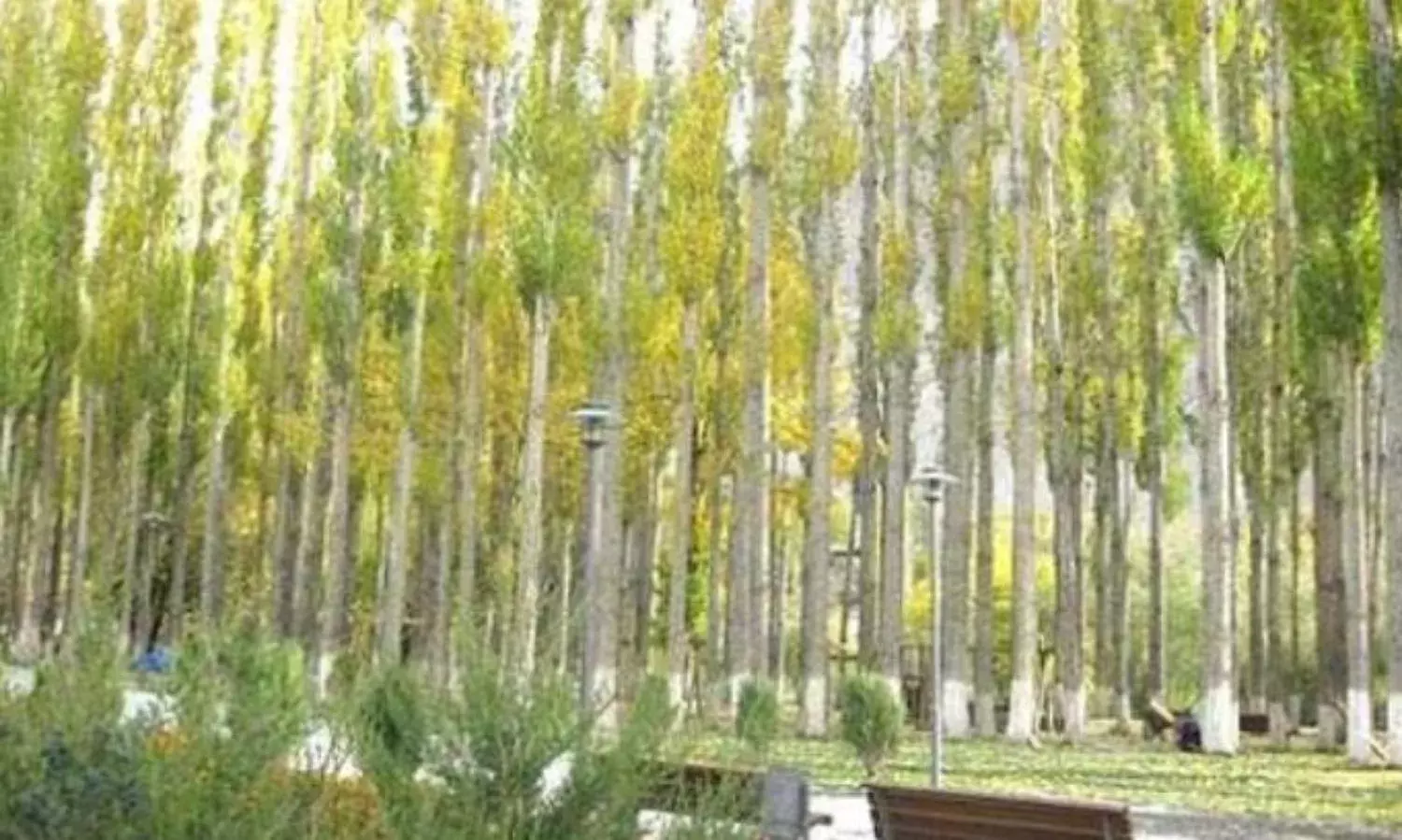Blow to Kashmir’s Rural Economy as Thousands of Russian Poplar Trees Axed
‘An environmental catastrophe in the making’

SRINAGAR: In a major blow to the rural economy thousands of Russian poplar trees are facing the government axe in the Kashmir Valley over the past two weeks.
Amid the Covid-19 pandemic, on April 3 the Jammu and Kashmir High Court directed the secretary of the Health and Medical Education Department to examine the impact of pollen released by the poplars, and its ability to carry the new coronavirus.
Following that, divisional commissioner Pandurang Kondbarao Pole directed all deputy commissioners and concerned officers to enforce a complete ban on planting and growing female Russian poplar trees in private nurseries, in compliance with High Court orders.
However, press statements issued by the Department of Information and Public Relations cite multiple deputy commissioners ordering the “axing” of female Russian poplars. The option of “pruning” is missing from these statements altogether.
On April 10 the High Court issued stay orders on cutting the poplars. But over the past fortnight people had already employed labourers to cut down trees worth crores of rupees.
The court also asked the J&K administration to constitute a committee of experts within four days to ascertain on a war footing the desirability of cutting down these trees.
Now despite the stay order, the axing practice continues in most parts of the Valley, with the authorities sending staff out into people’s orchards and fertile fields and cutting down poplars on a daily basis.
Ishfaq Ahmad, a doctoral scholar from Kahili Tral in south Kashmir, lamented that despite the court-ordered stay the authorities used a team to “remove” scores of trees from his orchard.
“It’s pretty astonishing that the government has removed dozens of Russian poplars from our village, when the Jammu and Kashmir High Court has already issued an abeyance order on the axing practice,” Ahmad said.
He said he had contacted the additional deputy commissioner in Tral but was told that no court orders had come to the administration.
There is chaos on the ground as people question officials about the abeyance order only to be told that “no such order has been received yet”.
According to government figures the Kashmir region is home to 20 million poplars, also known as North American cotton trees. Introduced here in 1982 they have come to be known as Russi Frass. In a matter of years they have become an important part of Kashmiris’ landscape and livelihoods.
The species takes just 8-9 years to achieve maturity, far less time than the Kashmir poplar which grows over decades. This has made them extremely popular among local farmers, who subsequently began to plant the trees on their own.
The felling of Russian poplars has badly affected the livelihoods of people in rural areas because industry worth ₹800 crore is dependent on its timber.
Besides being used for timber the trees are known to reduce the atmospheric concentration of carbon oxides.
They are also the backbone of farmers in the apple industry. Poplar wood is used to make the crates in which apples are transported.
Suhail Ahmad, an orchardist from south Kashmir said that after apples, poplars are the main source of livelihood in rural belts of the valley. “Besides orchardists and farmers, people living near the banks of the Jhelum are also dependent on these trees.”
He added that there are millions of such trees in the valley, and chopping them down ruthlessly will snatch the source of livelihood for many families.
Russian poplars, which can grow to 30-40 feet in height, were introduced under the World Bank aided Social Forestry Project of the state government in 1981-82. The project aimed to generate paid employment for the rural poor and improve environmental conditions through plantations that provide fuel wood, small timber etc.
The J&K High Court has on multiple occasions ordered that Russian poplars be felled or trimmed. Following a 2015 order in this regard, lakhs of poplars were felled across Kashmir.
The pollen seeds of these trees are said to cause respiratory problems, although no scientific study has been performed to back the claim.
Botanists in the region rule out any major role played by the trees in triggering respiratory ailments, much less transmitting COVID-19.
“There is no scientific study to prove that female poplars are responsible for causing major allergies or respiratory infections. Simple pruning of the canopy could reduce the shedding of seeds,” veteran botanist Mohammad Ramzan Wani told The Citizen.
Wani added that a large number of trees—Chinar and Locust—besides flowering plants also bloom in the same period and might be the source of the pollen.
Some studies suggest that dust, lawn grass and pine are the principal causes of springtime allergies.
A senior pulmonologist in Kashmir, who requested anonymity given a government order that bars health officials from speaking to the public, said there is indeed a springtime spike in allergy-like respiratory illness in the Valley, and the influx of patients also increases at this time. “But this has never been properly investigated.”
Mehraj-ud-Din Malik, joint director of the Social Forestry Department told The Citizen that “People do complain about the menace of cotton tufts released by female poplars around this time every year. But it doesn’t mean we should remove such a massive number of trees.”
Malik called it an “environmental catastrophe” in the making.
He suggested there could be more scientific ways to approach this. “People can use masks for two weeks rather than felling millions of poplar trees.”
Despite the court’s abeyance government officials continue to cut down Russian poplars across the valley, leaving people in suffering.
When contacted a senior J&K government official said: “We have orders from the higher-ups to remove Russian poplars in the valley. We have not received the court’s abeyance order yet.”



